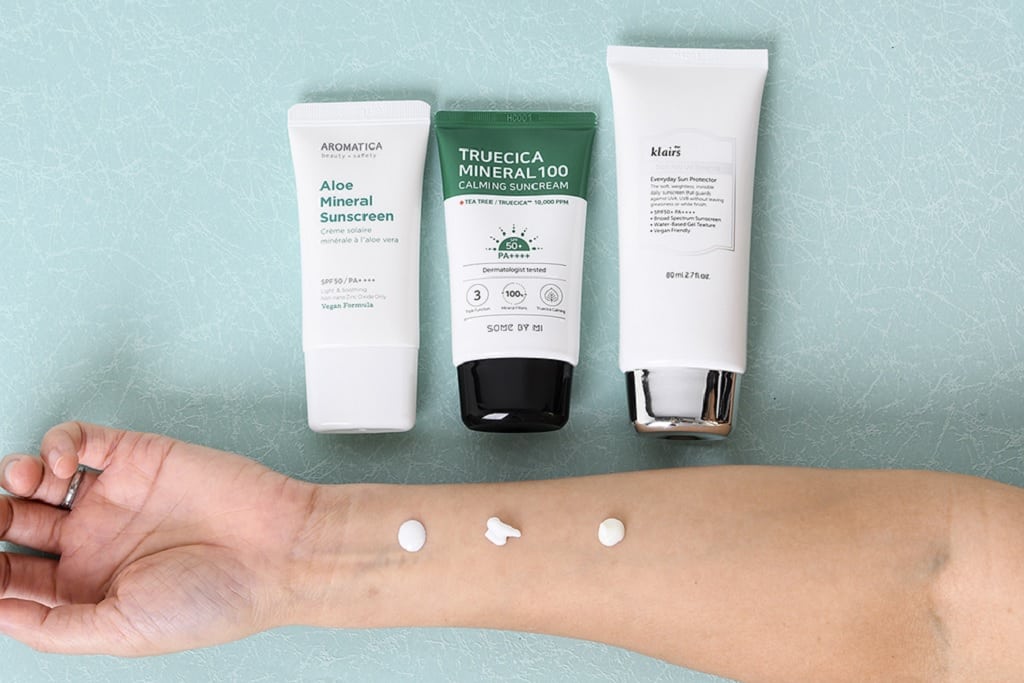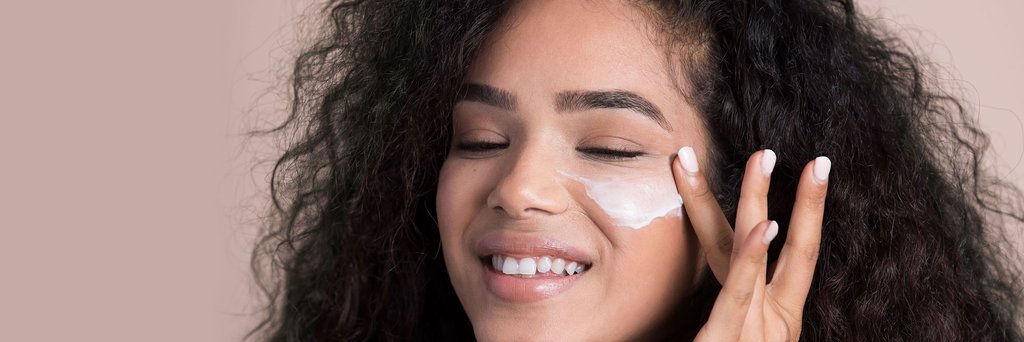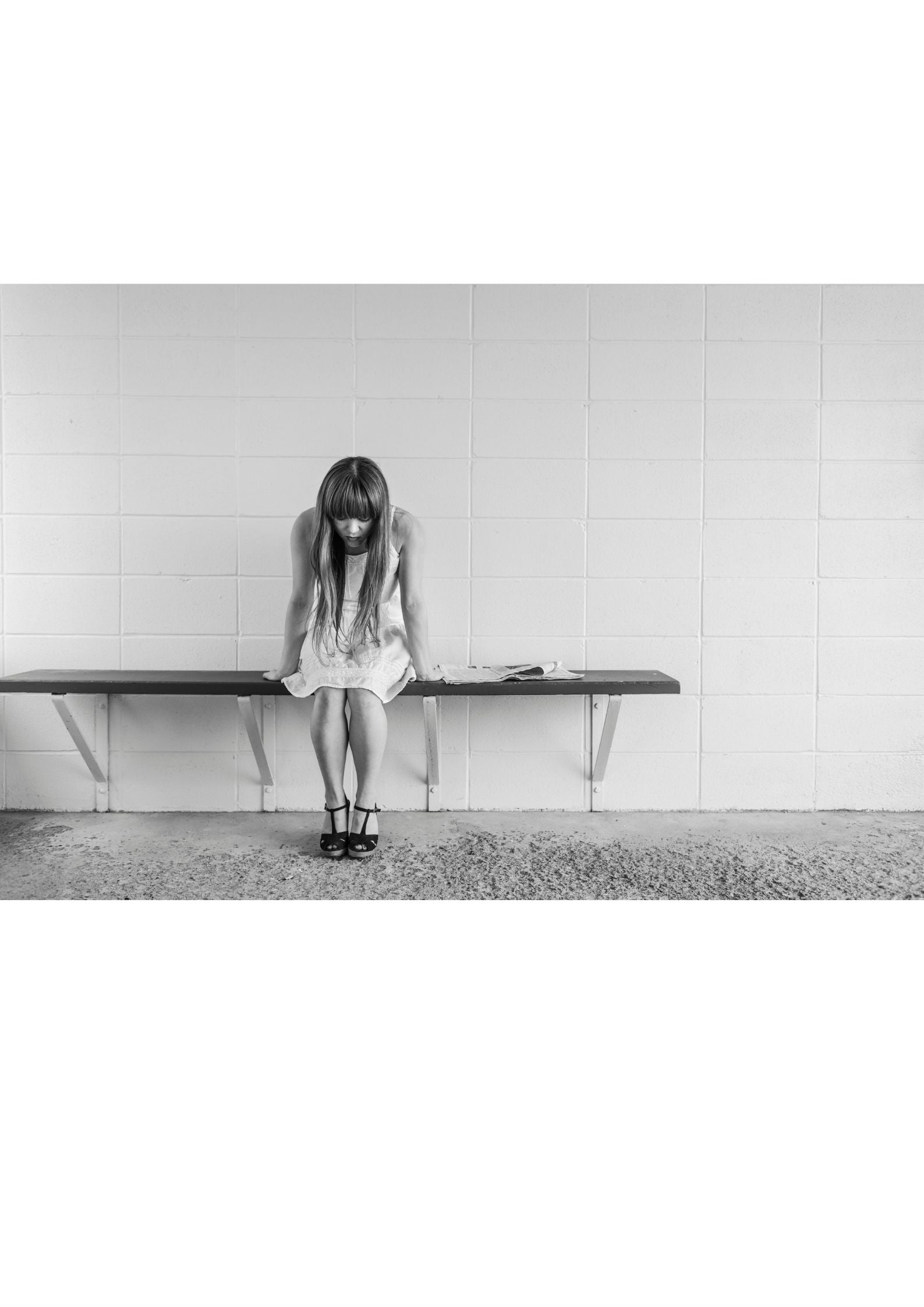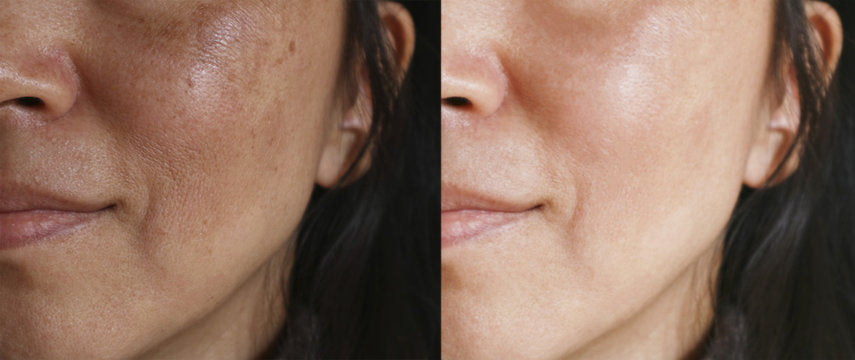Wearing Sunscreen Indoors: Fact or Fallacy?

A scientific skincare approach to this question
Over the past few years, I’ve seen a growing divide between sunscreen wearers in online skincare communities. I was confused as to why a group of people who agree on the importance of sunscreen for health and aesthetic purposes; have such a militaristic yes or no approach when it came to the question: Is it important to wear sunscreen indoors? After all, it is relative to your routine, infrastructure and curtains, right?
This hullabaloo was finally addressed by Michelle, a beauty lover and Chemistry PhD, ‘sunscreen guinea pig’ who runs a blog and channel known as Lab Muffin Beauty Science. Her goal is to educate people while busting myths, using a scientific yet simplistic approach. This post went viral for all the right reasons in skincare groups on Facebook, Reddit and even Instagram. Buckle up because we’re about to take a deep dive into the nitty gritty details of sun exposure indoors and whether we need to wear sunscreen sitting near a window.
Should I wear sunscreen indoors? Yes or No?
The skincare blogger confessed that she wasn’t wearing sunscreen indoors during covid lockdown. Her answer to whether we need to wear sunscreen indoors was; it depends! If you’re sitting in a dark room with drawn curtains, the chances of sun exposure are zero to minimal. However, if you’re sitting near an open window with the blazing sun hitting your face directly, then you MUST wear sunscreen.
Sunscreen basics & UV breakdown
The purpose of sunscreen is to ‘cut down how much UV reaches your skin’. It issupposed to provide you with protection from UVA and UVB rays, the SPF rating relates to protection against UVB radiation. It is a good indicator to avoid sunburns, but has no bearing over UVA.
Michelle from Lab Muffin broke it down in her blog and YouTube video in the following way:
UVB: ‘Shorter wavelengths, mostly responsible for sunburn, strongly associated with skin cancers.’ Do not penetrate as deeply into your skin, nonetheless it can make skin age faster.
UVA: ‘Longer wavelengths. Burn less but they cause prolonged tanning. Associated with melanoma, skin aging and hyper pigmentation.’ Its UVA protecting rating is determined through the broad-spectrum (PPD or PA) label on sunscreen packaging.
She leaves us with a takeaway that: ‘UV is bad so sunscreen is good’. But does this mean I should be wearing it indoors? Once again, it depends on sun exposure and inclination of skin to UV damage.
How much UV are you exposed to indoors?
Let’s not forget that Michelle is educating us mere mortals and this is a simple article written with the help of her blog and channel, to create more understanding around this topic.
There are TWO types of UV exposure or two ways to be exposed:
- Direct Exposure: When the sun is directly shining on your skin as opposed to standing in the shade.
- Diffuse Exposure: When the sun’s UV reaches your skin after hitting ‘air molecules high up in the sky’ or ‘objects around you’. In this situation there might be more diffuse UV than visible light, primarily because ‘shorter wavelengths get diffused more’.
Direct and Diffuse UV ratio may vary and is dependent on ‘factors’ such as ‘height of the sun and wavelength altitude’. This means if you’re in a cottage with open windows on top of a mountain, you might be better off wearing sunscreen indoors, because the sun is in closer proximity at higher altitudes.

https://unsplash.com/photos/fhmzpsC2uL4?utm_source=unsplash&utm_medium=referral&utm_content=creditShareLink

https://labmuffin.com/should-you-wear-sunscreen-indoors-an-analysis-with-video/
I’m indoors, now what?
Once indoors, you’re less likely to be exposed to both these types of UV that you may easily find outside.
Why?
Inside your house, there is more protection because of walls keeping UV rays out. However, shade and windows don’t eliminate the chances of being exposed to diffuse UV, completely. Unless you’re sitting in a dark room, hiding under a desk with your curtains taped to the wall?
I’ll assume that isn’t the case and move onto Michelle’s rough high-end scale approximation of ‘60% diffuse UV and 40% direct UV in the open’. She uses the ‘sky view model’. To simplify things, I’ll state that:
Whatever amount of diffuse UV you are receiving is equivalent/comparable to your sky exposure. If you’re standing in an open field without anything blocking your sky view, then you’re completely exposed to diffuse UV. But if you’re standing under a tree or some shade, then you have less sky view and lower exposure to diffuse UV. The image below shared by Michelle might be helpful in understanding this concept.

https://labmuffin.com/should-you-wear-sunscreen-indoors-an-analysis-with-video/
Enough with the science & answer the question
Since math and science aren’t my strong areas, I won’t reattempt to explain Michelle’s work in detail. Just keep in mind that your exposure also depends on the location, climate and time of day. UVA and UVB may vary from place to place and timing. Mid-day summers means higher exposure and therefore might require stricter sunscreen usage if you’re residing in an open house with netting and no glass, which is usually the case in most Pakistani infrastructure.
“For example, I sit around 3 metres from the window in my room. This means I get no direct UV, and up to about 3% of the diffuse UV from the sky through the window.
Even if I was only one metre away from the window that’s less than 2% sky view – with no direct UV, I’m getting about 1% of the amount of UV compared to being in the open.
So, in my particular situation, I’m going to get none of the UVB, and only 1/670th of the UVA compared to sitting outside in the open (assuming 1/4 of UVA is blocked).”
-Michelle from Lab Muffin Beauty Science
According to her, if you’re sitting near the window with 50% sky view then you’re getting 50% diffuse UV exposure. The farther you move away from the window, the less the diffuse UV exposure. Generally speaking, window glass blocks UVB but let’s in one third or a quarter of UVA. In essence, if you don’t like wearing sunscreen indoors then opt for thick curtains and closed doors. Otherwise, slather on some sunscreen and try to sit far away from windows and doors.
Personal conclusion in a Pakistani context:
After reading through Michelle’s scientific analysis and the journal references in her blog, I’ve come to the conclusion that wearing sunscreen depends on the following factors:
- Lifestyle Preferences & Life Schedule
- Architecture & Infrastructure
- Susceptibility to sun damage
- Skincare Routine
If your lifestyle requires you to sit, stay and roam in an open infrastructure with more exposure to sky view (with sunlight indoors), then you should wear sunscreen.
But if your house is in a shaded area surrounded by trees, minimal sky view exposure, drawn curtains, closed doors and windows; then you don’t need to wear sunscreen because you aren’t exposed to sky view.
If you don’t want to slather sunscreen BUT you have a cute little window in the corridor where the sun says hello for a few minutes during peak hours; then maybe you’re better off sitting far away from that window?
If you’re currently going through laser procedures, peels or a tretinoin/retinol-based journey (with a pre-disposition to sun damage) and the sun peeks in and out while you sit inside your home office; then it is safer to wear sunscreen.
Some days I wear sunscreen indoors especially if I’m spending time near the huge window in our TV lounge. Other days I skip sunscreen when I’m lazing in bed watching Netflix. At the end of the day, it depends.

References:
https://labmuffin.com/should-you-wear-sunscreen-indoors-an-analysis-with-video/
https://onlinelibrary.wiley.com/doi/abs/10.1111/j.1751-1097.2009.00677.x




Comments
fuck you bitch —
why the hell would you have to wear sunscreen indoors if you dont have to wear it at all? are you not using your brain or are you actually this dumb?
fuck you bitch —
sun is your friend and I will not let idiots like you prevent me from getting all the benefits.
fuck you bitch —
shows how pathetic you are as a human being when u tell people to put carcinogens on their skin. You dont need sunscreen, its toxic for you, your body has its own sunscreen called melanin you fucking morons and you will never need to put that shit onto your skin NEVER.